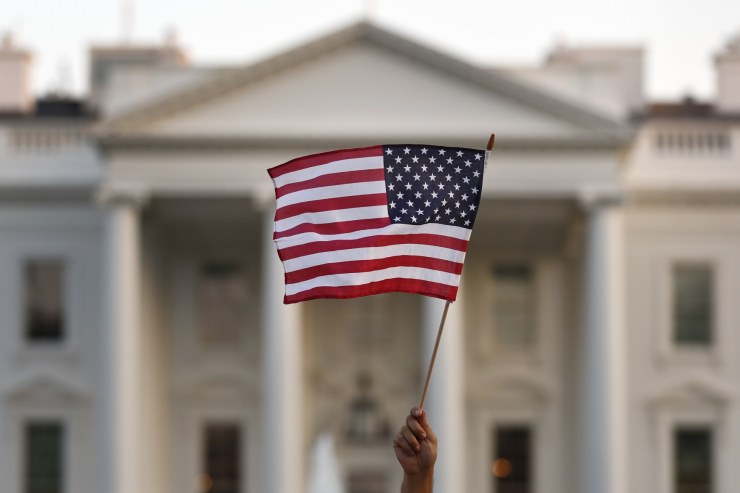In what can only be described as a masterclass in the art of political theater, Donald Trump’s proposed cabinet for his second term is a blend of loyalty, ideological alignment, and a dash of controversy, promising to steer the U.S. government in directions both familiar and uncharted. At the helm of foreign affairs, Marco Rubio’s appointment as Secretary of State suggests an attempt to balance traditional Republican internationalism with Trump’s “America First” doctrine, leveraging Rubio’s strong ties to Latin America and his understanding of global politics. Rubio’s experience in the Senate and his legislative work on immigration reform offer hope for nuanced diplomacy, although his alignment with Trump’s policies might tilt towards a more aggressive stance against authoritarian regimes.
The defense portfolio, entrusted to Pete Hegseth, reflects Trump’s penchant for military strength paired with conservative cultural views. Hegseth’s background as a military officer and his public advocacy through Fox News indicate a focus on reinforcing traditional military values, potentially at the expense of progressive social policies within the military. Meanwhile, Pam Bondi’s nomination for Attorney General is a clear nod to loyalty, with her history of defending Trump legally, pointing towards an administration that prioritizes political alignment over conventional legal experience.
In health, Robert F. Kennedy Jr.’s controversial stance on vaccines and his environmental advocacy signal a possible shake-up of health policy, aiming for a more holistic view on chronic diseases, which might clash with established scientific consensus. Doug Burgum’s appointment to manage the Interior Department underscores a push towards energy dominance, leveraging his business background to possibly favor industry over environmental regulation.
Kristi Noem, at Homeland Security, and Tom Homan as Border Czar, both echo Trump’s hardline immigration and border policies, reinforcing an administration committed to stringent enforcement. Lee Zeldin’s EPA leadership suggests a continuation of deregulatory policies, focusing on economic growth over environmental protection. Tulsi Gabbard’s unexpected nomination for Director of National Intelligence might aim to challenge the status quo, though her lack of direct intelligence experience could be contentious.
Elise Stefanik’s role as U.N. Ambassador and Stephen Miller as Deputy Chief of Staff further indicate a cabinet that’s not just about policy but about sending a message of unwavering support for Trump’s vision. Stefanik’s aggressive style could reshape U.S. engagement at the U.N., while Miller’s influence would ensure the internal execution of Trump’s nationalist policies.
Finally, selections like Linda McMahon for Education and Jared Isaacman for NASA reflect an interest in business acumen and innovation, potentially at the expense of traditional expertise in those fields. McMahon’s focus could be on alternative education models like school choice, while Isaacman’s space credentials might push NASA towards a more entrepreneurial approach, deepening ties with private space companies.
Overall, this cabinet lineup suggests Trump’s second term will be about consolidating power, pushing forward an agenda of deregulation, traditional values, and a reimagined relationship between government and private enterprise. It’s a cabinet designed to both implement and symbolize Trump’s policies, likely sparking debates on policy direction, loyalty versus expertise, and the balance between governance and political allegiance.
With Republicans holding the Senate majority in this scenario, there’s a foundational support for Trump’s picks. However, the margin of control will be crucial. If the GOP has a thin majority, any dissent within the party could complicate confirmations.
The influence of key figures like Mitch McConnell or any new Senate leadership could steer the confirmation process. Senators like Mitt Romney or Lisa Murkowski, known for occasionally breaking from party lines, could be pivotal.
Rubio, Burgum, Noem, Hegseth, and Bondi seem poised for confirmation due to their alignment with Trump’s policies, experience, and potential for GOP unity.
Kennedy, Patel, and Gabbard might face tougher confirmations. Their nominations could hinge on the GOP’s ability to rally around controversial figures or on Trump’s political capital to push through nominations.
Stefanik, McMahon, Zeldin, Miller, Isaacman, and Homan could go either way, depending on how their hearings play out and any political deals or concessions made in the Senate.
Each nominee, if confirmed, would likely shape their respective departments or roles in a manner consistent with Trump’s second-term agenda, emphasizing loyalty, deregulation, and a reinforcement of conservative policies. However, their effectiveness would also hinge on navigating the complexities of bureaucracy, public opinion, and legislative oversight.
Confirmation hearings for Trump’s proposed cabinet could be particularly contentious, given the controversial stances and unconventional backgrounds of several nominees. Figures like Robert F. Kennedy Jr. with his vaccine skepticism, Tulsi Gabbard due to her switch from Democrat to Republican and her views on foreign policy, and Kash Patel for his deep involvement in Trump’s intelligence community shake-ups, might face intense scrutiny or opposition from both sides of the aisle, questioning their qualifications, past actions, or ideological alignment with established policy norms. On the other hand, Trump has a track record of maneuvering around Senate confirmations through recess appointments, a constitutional power he’s used before. If the Senate proves resistant or if confirmation processes drag, Trump might resort to this strategy again, appointing these controversial or less experienced nominees temporarily during a Senate recess, thereby bypassing traditional confirmation hearings and potentially leading to legal and political battles over the legitimacy and duration of these appointments.
You can read more about the nominees here.


